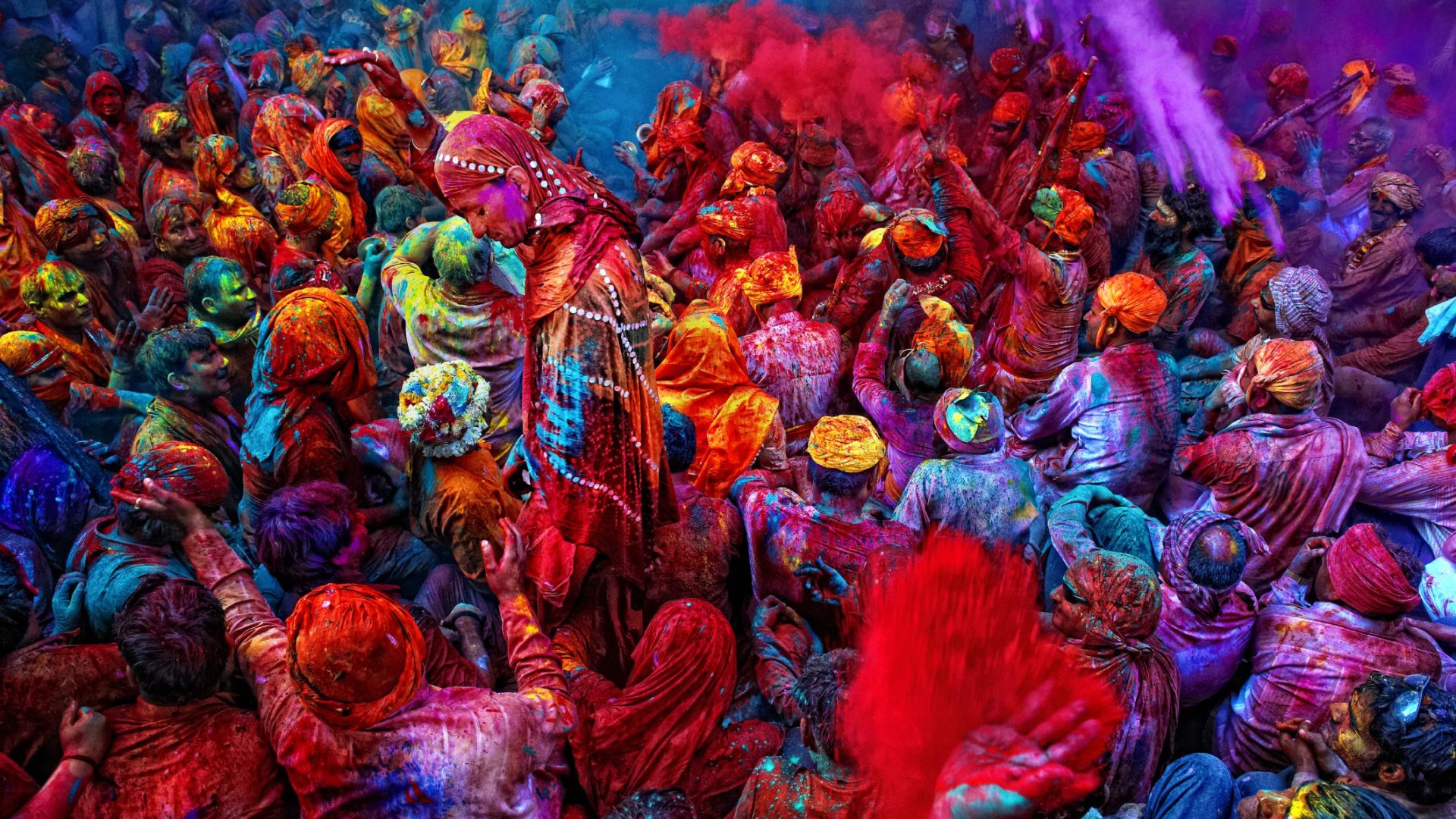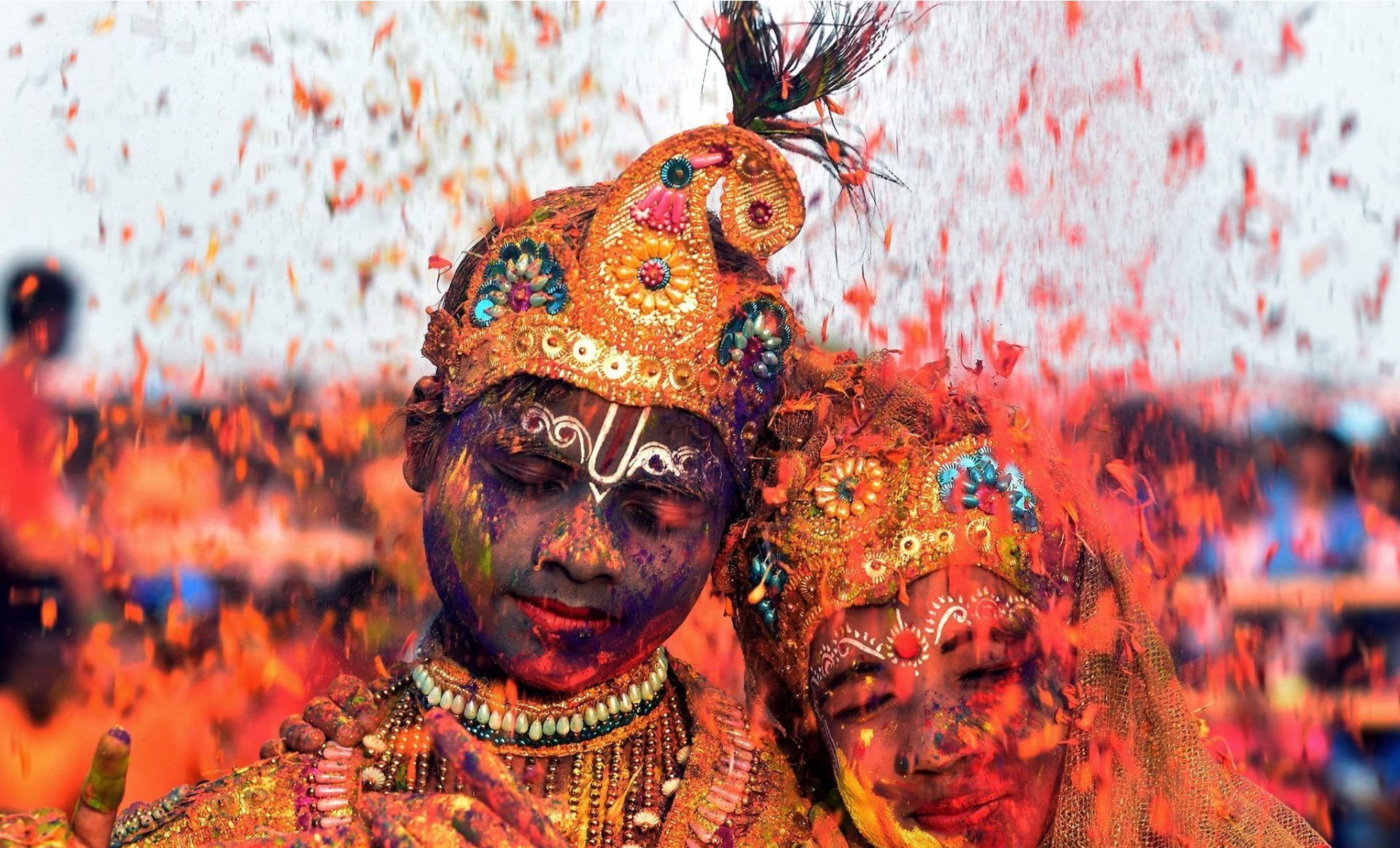Designing every detail: From sketch to stage prop
Ever wondered how we orchestrate emotions in our custom shows? Take a look at one of our instruments: carefully designed props.
As showmakers, we use various colours to boost our storytelling. Yellow is rarely one of them. Find out why as our Creative Director dives into a little colour theory.

Last month (20-21 March) the Holi Festival was celebrated. This vibrant celebration originates from India, although the exact myth or legend remains unclear. However, a single message stands out over any other: good conquers evil. Each colour represents its own story. Not only the Holi Festival uses colour to imply a deeper meaning. Colours have been used as a global means of storytelling for ages. Just as the story behind the festival of colour, the meaning behind colours has changed over time. We now all think of grass is green, but can you also call honey green? The ancient Greeks could…


Colour is often used as a descriptive factor and its implications change over time and between cultures. Yellow, for example, represents piousness and devotion during the Holi Festival, but has also been seen as indecent and cheap in the England of the 1870s, referring to the yellowback fiction sold at railway stalls. Nonetheless, all colours have overarching influences. In my experience as a show maker, I have found ways to boost my storytelling by using these influences. From props to lighting, colour is in every detail. With this article, I would like to share some of that knowledge with you.
To understand colour as a means of storytelling, it helps to understand its relation to music. In the 17th century, Sir Isaac Newton – yes, who also discovered gravity – felt inspired by the colours of the rainbow. Newton eventually decided that there were seven basic colours: red, orange, yellow, green, blue, indigo, violet. Why he decided on exactly seven is directly connected to music.

“Newton examined if he could, literally, play with colours the way one does with musical notes.”
As the music lover he was, Newton examined if he could, literally, play with colours the way one does with musical notes. He attached the seven basic colours to seven notes on a basic major C scale. The first D note would indicate red and the last C would indicate the colour violet. Just as notes on a piano, some sound great together while others don’t. A harmonious chord of three notes would correspond to harmonious colour combinations, while discords would result in contrasting colours. Luckily for us, Newton found a way to make these harmonies understandable for non-musicians as well, creating the colour wheel.

Now, how does all this translate to an amazing show? Let’s take the colour yellow as an example. As with any colour, the implications of yellow have changed: from bright yellow indecent novels and acid yellow rave posters to playful yellow emojis. While the contextual implications have changed, yellow’s rebellious character has continued throughout, as well as multiple scientific effects. As of 2019, yellow can be used best to…
From the seven colours of the rainbow, our human eyes process yellow first. It is the most visible colour and can be easily recognised from afar. This makes yellow also the most attention-grabbing colour, which is why stickers with “sale” in a store are often yellow. For a show, we can use yellow to indicate important elements without being too in-your-face about it. Using yellow in moderate amount is a way to grab your audience’s attention.

Throughout history, a bright, striking yellow has been used as a signal of deviation from normality. Similarly, it has globally been associated with new life or children. This implies that it is an excellent colour to use as a tool to introduce something new or different from what the viewer is already used to. Since yellow easily catches our eye, our bodies are used to immediately put in the effort to process it. It is even said to increase metabolism and definitely increases our heart rate.
Since this colour takes lots of energy to process, people are more likely to want to “escape” it in large quantities, which encourages our bodies to move and increases our feeling of energy. This all can be very handy when you want the audience to be excited and curious about something new, rebellious even…
“Since yellow takes lots of energy to process, people are more likely to want to ‘escape’ it in large quantities.”


An overuse of yellow has its own effect, as well, especially a highly saturated type of yellow. Since yellow reflects high amounts of light, it is also the most tiring colour to look at. We all have tried looking straight into the sun or a lamp. It’s a feeling most people won’t enjoy for long. Taking into account the great power that stage lights possess, extensive use of highly saturated yellow is definitely not recommended.
Most colours can be slightly downplayed by adding some black into the mixture, used in decor for example, but yellow is the only colour which makes this impossible. When adding any black, the yellow tone easily fades into a slimy green. Yellow can, however, be downplayed by adding other colours into the mix or by simply adding white. Think about the soft yellow of little chicks. Who will ever get frustrated by that thought? As long as we stay away from the acid yellow of the 80s.

Storytelling and colour go hand in hand: colour as a mean to tell a story, but also as a way to enhance the story’s impact. As there are countless colours, we can use them to tell a countless amount of stories. However, no matter how hard we try to generalise the impact of colours, its perception is subjective.
Factors such as age, culture, stage setting and even the state of our own eyes influence our perception of colour. This is why, as showmakers, we make sure never to downplay the importance of knowing our audience. I previously wrote an article on project management in Asia, where approaching the audience, as well as your team, differs from what West Europeans as myself might be used to. People are unique. Therefore, our shows as well.